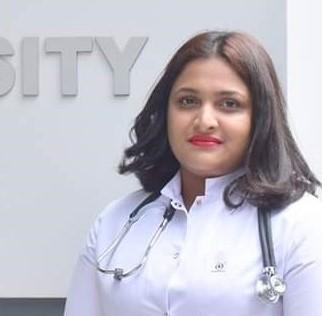Why Do Babies Shake Their Head When Tired
Key Pointers
- If a baby is healthy and happy, parents shouldn't worry about head-shaking in babies.
- Babies milk shake heads to hone their ability to keep belongings their caput upwards, self-soothing, or position their head to latch on to the nipple while breastfeeding.
- Shaking caput side-to-side is the most common style older infants respond to a question or communicate.
- However, excessive or repetitive caput-shaking indicates an underlying problem that a pediatrician must evaluate.
You may notice a baby shaking their caput while interacting with others or playing. Shaking their caput from side to side is a common manner older infants react to questions or communicate. Though head shaking is common in little ones, it could besides signal neurological or developmental problems.
Read this post to learn more most the typical and uncommon reasons babies shake their heads, how to deal with information technology, and when to consult a doctor.
Normal Causes Of Baby Head-Shaking
If you detect your infant is happy and salubrious, then head-shaking is zilch to worry about. Here are a few usual reasons why your infant may shake their head.
1. Developing motor skills
Once your infant'southward cervix muscles are developed, they test their power to hold up and motion the head. Information technology is a part of normal development. Usually, past the stop of the start month, babies outset moving head side to side. By the age of ii months, they can raise their heads while on their tummy (one). Information technology may be jerkier initially due to developing muscle control.
ii. Self-soothing
Babies may shake caput side to side as a part of self-soothing. It tin be a natural tactic to calm themselves downwards to sleep. You may observe this beliefs right before your little one falls asleep.
three. While breastfeeding
While breastfeeding, babies may shake their head to latch. Information technology tin exist 1 of the outset head movements babies may brand. During nursing, they might also shake their head due to excitement. Though your baby may support and move their head side to side, you should support their head while feeding until the age of three months.
4. Playing and interaction
Babies first to move their heads as a part of social interaction in the initial months. . You may notice increased head shaking when your babe is excited.
5. Communication
A baby may employ head-milkshake as a manner of not-exact advice. Equally the baby grows older, they may shake their caput along with making sounds to express emotions or demand something.
Baby Caput-Shaking Causes That Are Not Normal
If head-shake is associated with other concrete and behavioral symptoms, then it could be due to developmental bug or certain medical conditions. Nosotros volition touch a few:
6. Ear infection or fluid collection in the middle ear
It leads to pain or discomfort. This will often be associated with fever, crying, and other signs of affliction. Ear tugging along with head-shaking may then occur (ii).
seven. Autism spectrum disorder
Babies with autism tend to shake their caput involuntarily. Frequent headbanging is sometimes observed with this disorder. In such cases, cheque for these associated behavioral traits.
- Does not respond to sounds
- No reaction if you telephone call their name
- No smile or middle contact
Early diagnosis of autism disorders may improve the quality of a child's life due to early interventions and less parental stress (three).
8. Myoclonic epilepsy
Myoclonic head jerks or spasm can exist seen in babies during epilepsy. This may be due to serious neurological disorders (4).
9. Spasmus nutans
It is a disorder where babies practise head-bobbing, with rapid eye move called nystagmus. Sometimes, they may hold their neck in an abnormal position. This condition normally occurs between four months and one twelvemonth of age and resolves later in life (5).
Repetitive Side-To-Side Caput-Shaking When Sleeping
Shaking of head side-to-side during slumber can exist a symptom of rhythmic motion disorder (RMD). It is a neurological disorder with repeated motility of large muscles before or during slumber, especially in infants. It usually involves caput and cervix movements and has the post-obit associated symptoms (half-dozen).
- Headbanging
- Body-rocking
- Head-rolling
This condition might exist genetic since it is often seen in families and amidst twins. Seek a doctor's opinion if y'all suspect RMD.
When To Consult A Physician?
You lot may consult a pediatrician if you discover any of the following events, along with head shaking.
- Poor interaction with caregivers
- Abnormal eye movements
- Headbanging causing hair loss and injury
- Increased head-shaking during anxiety
- Trying to self-hurt
- Delay in development
- No response to sounds
- Caput-shaking after two years of age
How To Stop Babies From Shaking Head?
Shaking head may cause dizziness and disorientation in babies, and information technology may issue in falls. It might too increase the run a risk of hitting the crib, table, or wall. Yous may follow the following tactics to prevent your infant from head-shaking.
- If your babe does it before sleep, then try to find an alternative method to soothe them before they become to bed.
- If it is due to stress or agitation, then create a calm environment in their room.
- Giving a massage could assist a babe to relax.
- If you sense that the baby shakes their head as a manner to throw tantrums, then do not give in to their demands. As soon as attentin is given (iven negative attention) it enhances the behavior.
Shaking of the head by a baby is usually a normal developmental milestone. Excessive or too piddling movement might point towards underlying bug. However, if you are in incertitude it is wise to rather consult with your pediatrician. Information technology is also very helpful to take a video-clip of the movements that concerns you to prove to your pediatrician.
When did your babe offset to move their head? Allow us know your experiences in the annotate section below.
References:
MomJunction's articles are written after analyzing the research works of expert authors and institutions. Our references consist of resources established by regime in their respective fields. You can learn more virtually the authenticity of the information we present in our editorial policy.
Recommended Manufactures:
-
- 10 Reasons For Infant Arching Dorsum & Effective Ways To Correct It
- Flat Head Syndrome (Plagiocephaly): Causes, Symptoms And Treatment
- 11 Reasons Of Babe Sweating In Sleep And Tips To Manage
- Skin Tags On Babies – Everything You Need To Know
The following 2 tabs change content below.
- Reviewer
- Author

Dr. Elna Gibson is a general pediatrician. She did her MBChB and specialization as a pediatrician in Southward Africa at the University of Pretoria. She obtained MMed Pediatrics (masters) with stardom in 1993. As a immature specialist, Dr. Gibson spent some time in holland, and then settled in the Vaal Triangle where she has practiced for 25 years. She... more than

Dr. Bisny T. Joseph is a Georgian Board-certified doctor. She has completed her professional graduate degree as a medical doctor from Tbilisi Country Medical Academy, Georgia. She has iii+ years of experience in various sectors of medical affairs as a medico, medical reviewer, medical writer, wellness coach, and Q&A expert. Her interest in digital medical didactics and patient education made... more than
cunninghampany1953.blogspot.com
Source: https://www.momjunction.com/articles/baby-shaking-head-side-to-side-causes-prevention_00570105/
0 Response to "Why Do Babies Shake Their Head When Tired"
Post a Comment